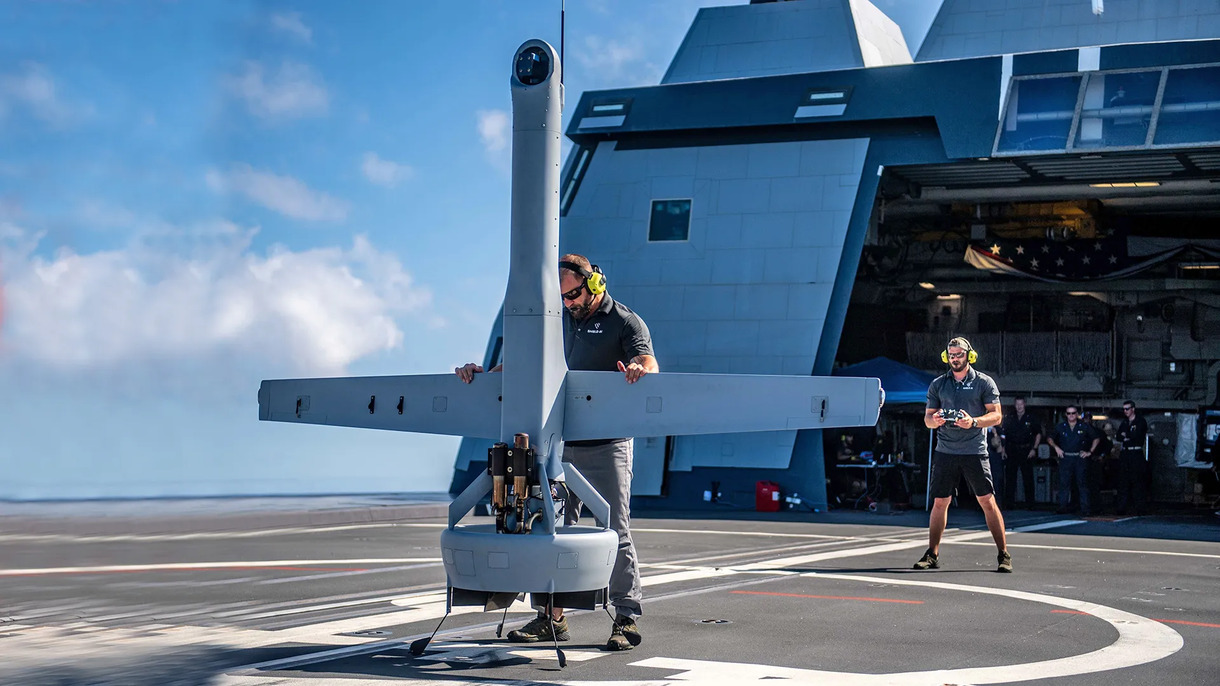Kalashnikov has announced that it has successfully developed an autonomous optical navigation system (BONS) to provide precision guidance in GPS-denied airspace.
BONS is AI-based machine vision. Onboard cameras and sensors capture visual data, which is then processed through advanced algorithms to identify objects, track targets, and analyze environments in real-time.
These systems interpret the data using techniques like image recognition, pattern detection, and sometimes artificial intelligence, enabling the drone to make autonomous decisions or relay precise information to operators.
Drones can use BONS to periodically fix INS drift errors to ensure accurate navigation to the target.
According to Kalashnikov’s press service, “The development is designed to determine the drone’s own geographic coordinates based on the image of the underlying surface. Based on the calculation results, it provides the carrier’s position, drift angle, ground speed and transmits all the necessary information to the carrier’s automatic control system.”
Kalashnikov SKAT 350 drones fitted with BONS are scheduled to undergo trials as part of the Russian special military operation in Ukraine.
SKAT 350
The Kalashnikov SKAT 350, specifically the SKAT 350 M, is a deeply modernized version of the Supercam 350 drone.
The Supercam 350, produced by the Unmanned Systems Group, was developed for both civilian and military reconnaissance tasks. It can fly for up to 4.5 hours, transmit data for 50–100 km, and is resilient to jamming.
The SKAT 350 represents a significant upgrade over the original Supercam 350, incorporating improvements based on operational experience.
The SKAT 350 M features enhanced aerodynamic properties, a redesigned wing structure for increased strength and reliability, and an upgraded ground control system. These changes improve its performance, making it more effective for aerial surveillance and reconnaissance missions in both optical and infrared ranges.
The SKAT 350 M also includes advanced payload capabilities, such as higher-performance daylight and thermal imaging cameras, along with sophisticated algorithms for target identification and tracking. Additionally, it has automated features like a new battery controller and automatic operation modes, which enhance ease of use and operational efficiency.
Despite Kalashnikov’s fielding of a machine vision drone, Ukraine was the first to introduce drones with “machine vision” capability to optically fix their ground positions. It field-tested this capability in a large AI-enabled kamikaze drone called the V-BAT in May 2024.
V-BAT Drones
The vertical take-off and landing (VTOL) uncrewed aerial system (UAS) V-BAT can use machine vision to fix its INS-computed ground position, thereby safely operating in an intense electronic warfare environment where GPS signals and communication links are jammed.
The V-BAT, known as the MQ-35 in the US, can complete its mission from start to finish without an operator in the loop. A single operator can control a minimum of five drones; aircraft flight paths are not plotted by humans but are always generated autonomously in real-time.
It has a 500 km range and can loiter over the target area for 10 hours in horizontal mode.
The V-BAT has a payload capacity of 11.3 kg and a service ceiling of 6 km.
Its sensor suite comprises EO/mid-wave infrared (MWIR) cameras for high-resolution imaging across diverse lighting conditions.
The V-BAT can use machine vision to refine its INS-computed position, enabling safe operation in an intense electronic warfare environment.
Shield AI, in a press release, claimed that a V-BAT had demonstrated its versatility during naval operations in the Black Sea.

This claim supports Ukrainian reports that AFU forces destroyed a Russian Pantsir air defense system hundreds of kilometers away in Crimea using a kamikaze drone launched from a drone boat. It is believed that the drone used was a V-BAT.
Russian Ovat-S
Russia first fielded AI-enabled machine vision capability with its Ovat-S, which is much more modest than that of the V-BAT drone.
The Ovat-S drone, often referred to as “Ovod” or “Gadfly” in English, is a first-person view (FPV) kamikaze drone developed to meet the urgent needs of Russian forces.
The drone features an onboard computer and uses neural network-based AI and machine vision to identify a target. If commanded to attack, it homes in on the target using machine vision.
Its machine vision tracking and homing capabilities allow it to operate under GPS denial, control channel jamming, and degraded radio visibility due to low altitudes.
The drone is equipped with a new, inexpensive ammunition shell.
The Russian Ovat-S drone exhibits significant autonomy: if the communication link fails after the operator confirms the target, the drone continues its attack.
It has remote detonation and self-destruction functions. The combat payload weighs approximately 3.5 kg. It has a flight range of about 8 km and a cruising speed of 150 to 180 kph, allowing it to fly for 8 to 10 minutes.
Since its introduction, the Ovat-S has evolved based on battlefield usage. Improvements include increased payload capacity and the integration of thermal imaging cameras. Early deployments were noted in combat zones like Avdeevka in the Donetsk People’s Republic.
Machine Vision – Eyes Of The Future
AI-enabled machine vision has rapidly evolved to a point where it could become the cornerstone of next-generation drone warfare. It enhances autonomy, precision, and adaptability in complex battlefield environments.
Precision guidance of weapons and weapon delivery systems has so far relied heavily on RF signals from GPS and communication satellites. Since RF signals can be jammed, drone autonomy has remained an easily shattered dream. Electronic warfare is a cat-and-mouse game that neither side can win in the long run.
Machine vision is absolutely essential for drone autonomy. By integrating advanced image processing, object recognition, and real-time data analysis, machine vision empowers drones to perform tasks far beyond human-operated systems.
This capability is critical for identifying targets with pinpoint accuracy, distinguishing friend from foe, and navigating unpredictable terrains—functions that are increasingly vital as warfare evolves.
This autonomy extends operational range and resilience, as drones can function effectively even under communication disruptions or electronic jamming.
Moreover, machine vision enhances situational awareness by processing vast amounts of visual data—daylight or thermal—far faster than human analysts, providing commanders with actionable intelligence in real-time.
Russian forces have been using the SKAT 350 M to detect, identify, and pinpoint adversary targets. Machine vision will steadily improve the drone’s ability to perform its tasks. The accuracy of target coordinates determined by the drone will increase, as will the ability of precision weapons launched to destroy the targets.
Additionally, machine vision supports scalability. Swarms of drones, coordinated through shared visual networks, could overwhelm adversaries by executing synchronized strikes or reconnaissance missions.
As conflicts grow more technology-driven, machine vision will underpin drones’ ability to adapt, learn, and dominate, making it an indispensable pillar of future warfare strategy.
- Vijainder K Thakur is a retired IAF Jaguar pilot, author, software architect, entrepreneur, and military analyst.
- VIEWS PERSONAL OF THE AUTHOR
- Follow the author @vkthakur




